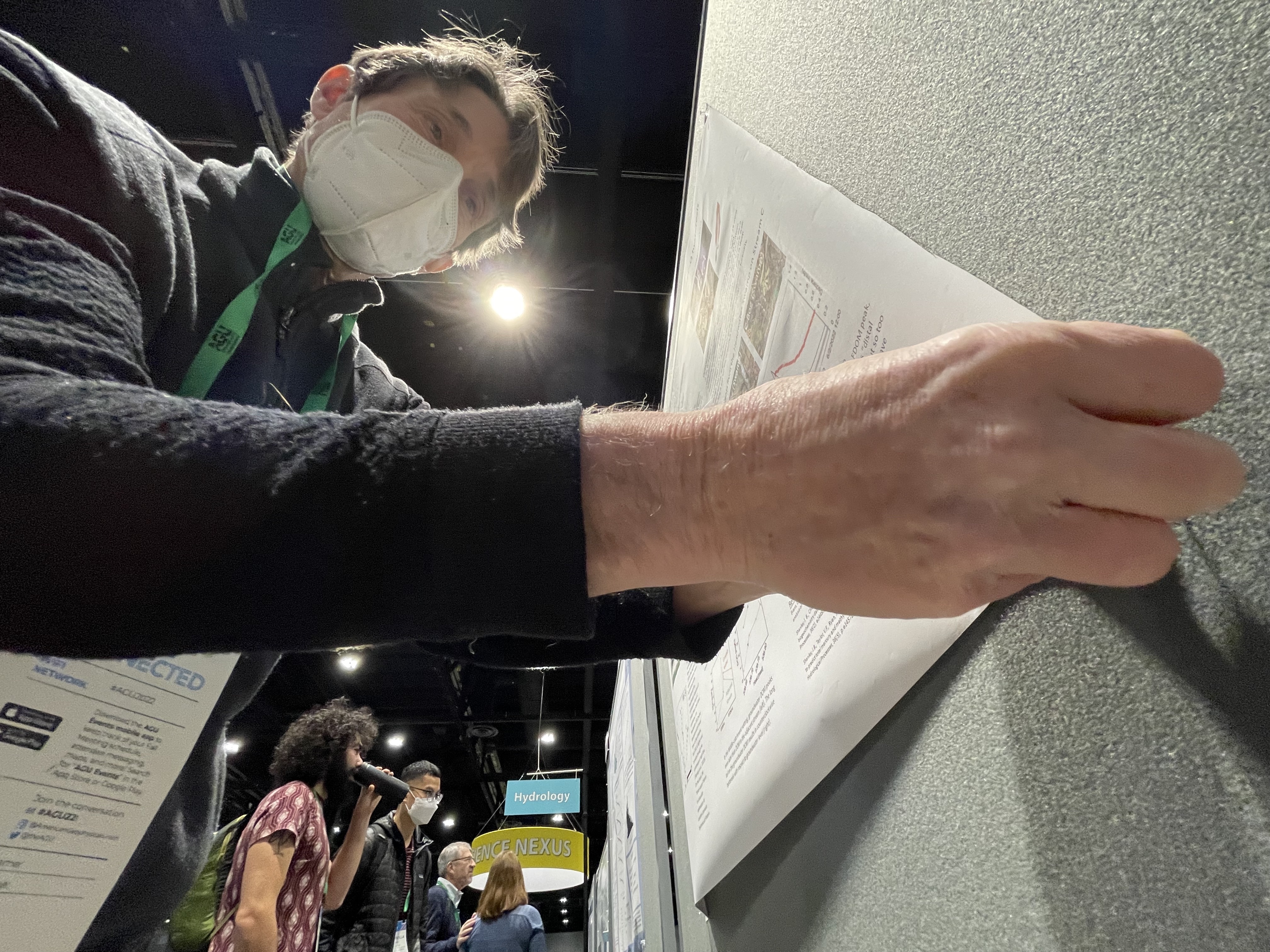Jamie Shanley is a Cluster collaborator and manages the Sleepers River Research Watershed which provides much of the data we use. At the American Geophysical Union (AGU) Annual Fall Meeting Shanley helped convene four sessions in one day, all centered on Critical Zone catchment science.
These examples from work presented in the morning poster session highlight the inclusive, interdisciplinary, innovative nature of Critical Zone research and researchers.
Posted: December 15, 2025

Shanley and his fellow session conveners are committed to strengthening the catchment community through networking and collaborative professional development. All of the science in all four sessions today looks at the many ways catchments function in the Critical Zone.
Hannah Fazekas based at the University of New Hampshire, was part of the morning poster session and says studying a specific point in a watershed provides insight into the entire region.
The morning AGU22 poster session "Catchment and Critical Zone Science – Understanding Ecosystems Through Monitoring, Analysis, and Experimentation" included several examples of the wide breadth of Critical Zone research.
For University of Cincinatti-based Xi Chen, this breadth provided their collaborative team a welcoming place to present their work.
The four parts of "Understanding Ecosystems Through Monitoring, Analysis, and Experimentation" also includes examples of how Critical Zone researchers find new ways to use existing tools to explore the complex systems that operate between the bedrock and the treetops.
Like Leah Topping based at Clemson University, who combined current seismic refraction and handheld X-Ray fluorescence tech to learn new things about the Critical Zone.
Members of the catchment community fostered by Jamie Shanley are committed to vastly expanding the sources of data available to Critical Zone researchers who study watersheds.
Mike Vlah from Duke University tells us this ongoing work presented at AGU is part of the open source and open science movement in the scientific community.
With a dozen papers presented in this morning poster alone, Critical Zone research is strongly represented at AGU22.
William Larsen from Rice University collaborated with two Big Data Cluster members, Dustin Kincaid and Kristen Underwood, in this research into concentration-discharge relationships.
Larsen says that he was impressed with the inclusive feeling in the Critical Zone research community.

 Big Data
Big Data